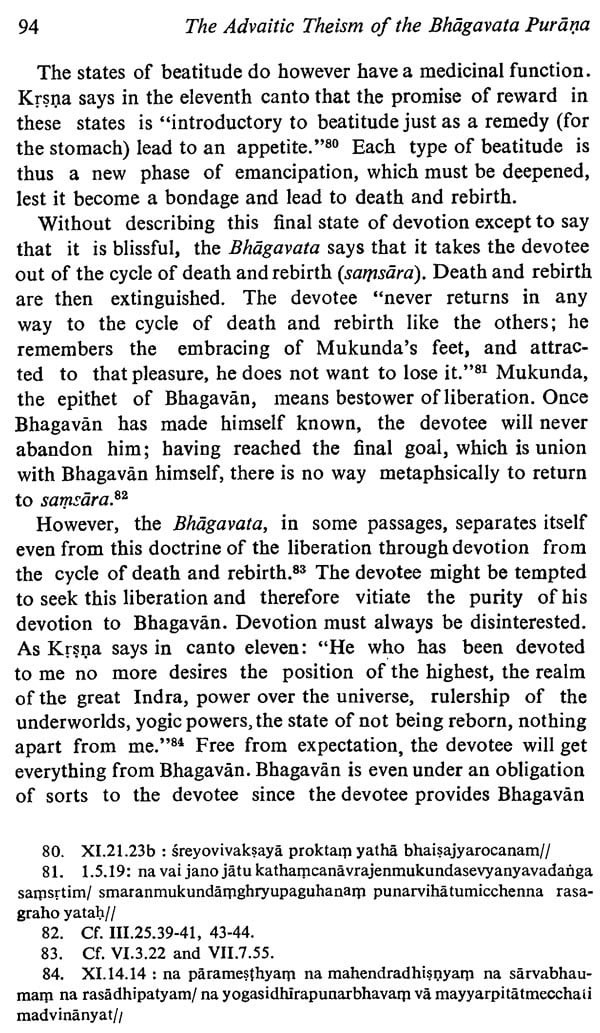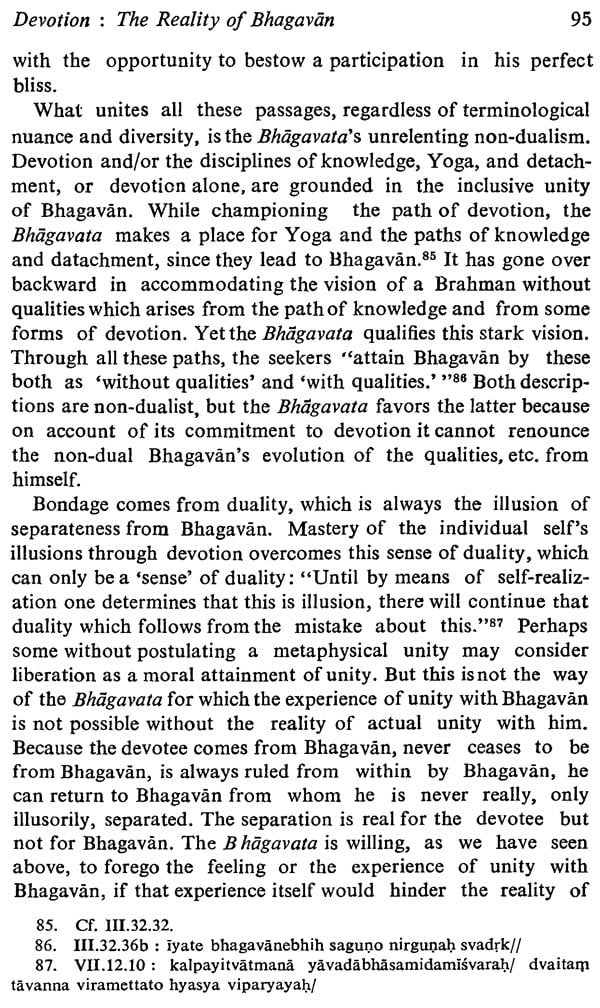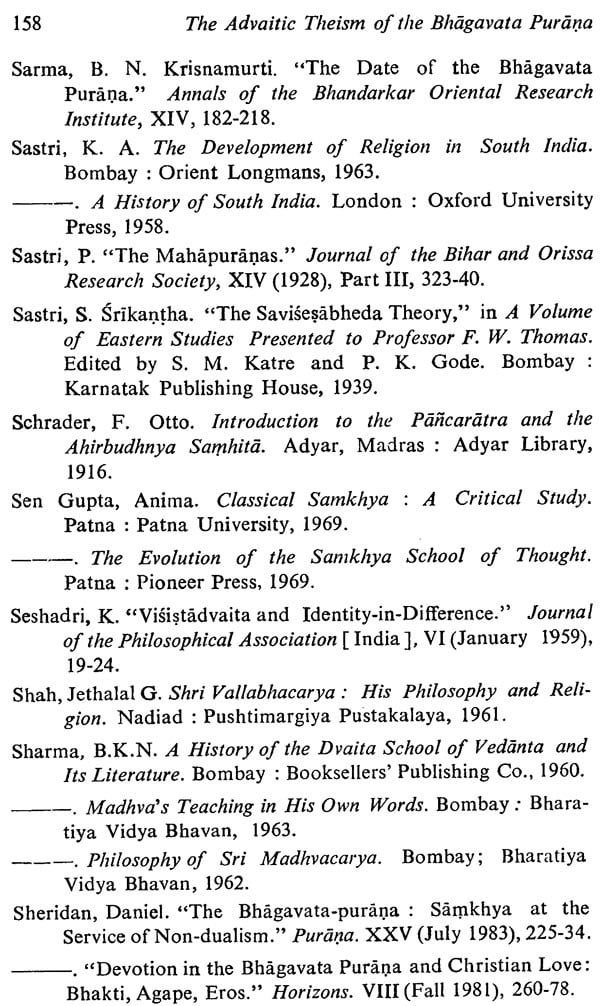
The Advaitic Theism of The Bhagavata Purana
Book Specification
| Item Code: | IDF059 |
| Author: | Daniel P. Sheridan |
| Publisher: | Motilal Banarsidass Publications, Delhi |
| Language: | English |
| Edition: | 1986 |
| ISBN: | 9788120801790 |
| Pages: | 182 |
| Cover: | Hardcover |
| Other Details | 9.00 X 6.00 Inches |
| Weight | 332 gm |
Book Description
Within a compass of eight chapters of this volume the author makes a close examination of the fundamental tenets of Bhagavata Purana. By penetrating analysis he shows how as a unified scripture Bhagavata Purana combines Vedantic non-dualism and Vaisnava devotionalism; and how the Bhagavata non-dualism accommodates the reality of the universe and of the individual selves in it within the all-encompassing reality of Brahman. According to the author, this wonderful blending of devotionalism and non-dualism in the Bhagavata Purana finds its expression in the worship of Krsna as transcendent and supreme deity by all Vaisnavas.
Discussion and delineation throughout the chapters single out 'each of the major forces' determining 'the religious structure of the Bhagavata which has a significance and meaning for the study of religion beyond that of situating a scriptural text within a religious history'.
The present scholarly work will be of special appeal to the students of Indian religion and philosophy. It will also find place in the bookselves of the general reader interested in Indian history and culture.
Dr. Sheridan is Associate Professor of the History of Religions at Loyola University in New Orleans, Louisiana.
The Krsna legends are presented in a village folk setting with trickster episodes and erotic love-play that communicate some of the most distinctive aspects of the devotional traditions of India. Such a saviour personality! A divine child who steals butter and plays pranks with his family, a youth who steals the garments of the maidens while they are swimming, who hides and then reveals himself, who dances with erotic delight with the village women, and in all this makes the divine present in its supreme transforming power. While such legends of an incarnate deity offend our western sense of divine dignity, they establish in India an archetypal figure that has inspired the religious life there in an all-pervasive manner over these many years. Indeed these are not merely fanciful tales; they are supported by the elaborate sequence of narrative recitations, descriptive passages and intellectual discourse. This is what gives to the Bhagavata Pura va not only its amazing power over the emotions and sensitivities of India but also over its high intellectual perceptions.
Yet non-dualism can cut across a rigid dichotomy between transcendence and immanence. A God who is not ultimately different from the individual self transcends the limitations of specificity, individuality and temporality. A God who is not different from creatures is immanent in the forms evolving out of the divine self. A God who is not subject to time need not be distinguished from creatures on account of priority.
Book's Contents and Sample Pages













